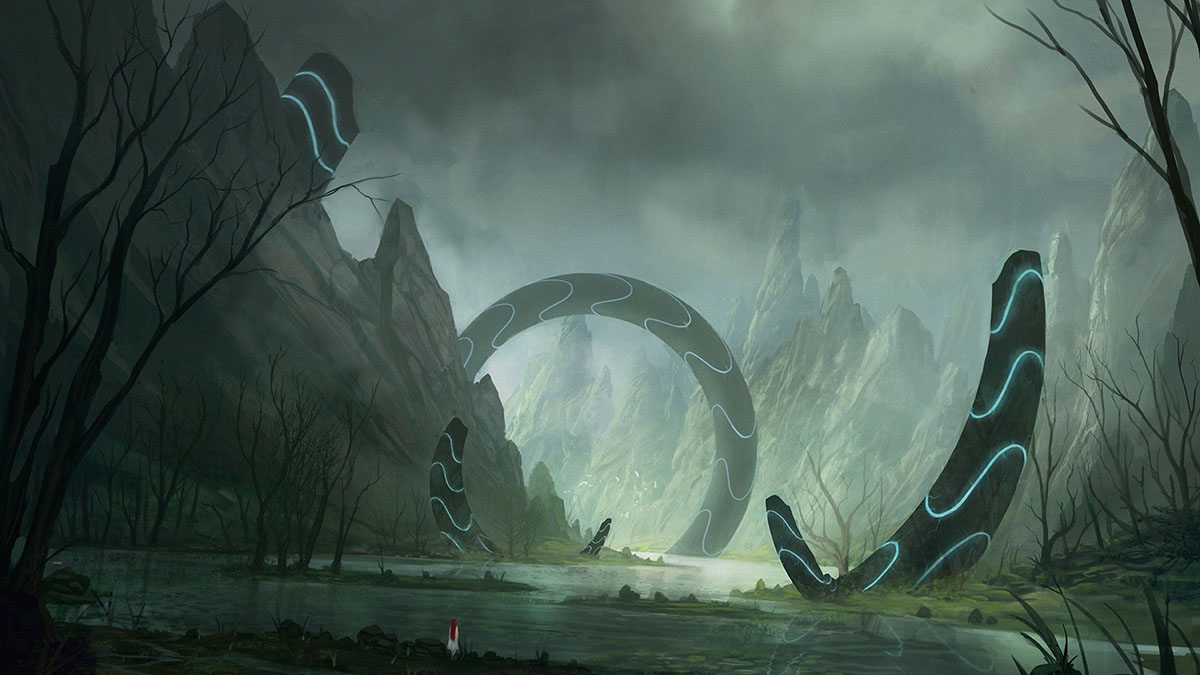the galactic graveyard: why alien civilizations in our galaxy may be long gone

One day, we may venture to the stars, hoping to make contact with alien civilizations as we hop from solar system to solar system, and find nothing more than alien ruins and mummies. This is the conclusion of a study by a small team at Caltech looking at the statistical probability of how alien life would evolve in the Milky Way, and where it would be most likely to emerge based on stellar populations and conditions across the galactic disc. Their conclusion? Conditions for life peaked 5.5 billion years ago roughly 12,000 light years away.
How did they arrive at this conclusion? Well, complex and intelligent life needs to have the heat from a star that’s large, but not too large. It needs to have some distance from radiation storms sent out by supernovae, feeding black holes, and unstable neutron stars still settling down. It needs a planet with solid ground, a solvent, and stable temperature ranges over many millions of years. And there’s always the question of whether it will survive a mass extinction, or climate changes, or evolve to be smart enough to destroy itself.
Based on what we know about how stars are distributed throughout our galaxy and how they move over the eons, and plugging in some numbers based on what we currently know about evolutionary timelines, the data says that the best place for intelligent species to emerge is at the edge of the inner belt of the galaxy, with optimal conditions emerging when the Milky Way stabilized into something very similar to what we see today. Viewed in this context, we’re late bloomers who emerged in the middle of a small, fringe arm.
why we need to consider deep time
Perhaps one of the most interesting things about this study is that it tests a proposed answer to the Fermi Paradox, the question of why don’t we see evidence of alien life if there are aliens out there, by delving into deep time. Deep time is a bizarre concept for mortals like us to grasp, but deep time is basically thinking on scales of millions, if not billions of years, scales on which our existence is just a blink of an eye. And when we dive into it, we start noticing and thinking about all sorts of massively influential phenomena we normally ignore.
In a million seconds, you may notice that the week is over and things are probably adhering to their normal routine. In a billion seconds, or almost 32 years, you’ll notice just how much you’ve aged and observe significant technological, societal, and political changes. Similarly, if you look at the stars within a human lifetime, the vast majority of space will look docile and static. But if you observed it for billions of years, you’d notice everything moving, exploding, or colliding. With enough time, you start seeing crucial, influential patterns you would’ve missed otherwise.
Now, just consider that humanity has only been around for 200,000 years at most, and what we would recognize as human civilization is maybe 12,000 years old while our galaxy is 13.5 billion years old. Hell, we may not even be the first civilization on Earth! If we give ourselves the more or less standard million years to exist, the average for most species, we’ll still just blink in and out of existence in the grand scheme of things, and could have done it ten thousand times over in the span of our galaxy’s life.
so, are all the aliens really dead?
Of course, we should take this study with a large grain of salt, not because there are serious flaws, but because we still know very little about intelligent life and its evolution, seeing how we only have a handful of examples from which to derive some facts and figures, and only one sample of a civilization. The only thing we do know for certain is that we can’t see evidence of hyper-advanced technology and stellar engineering at a galactic scale, which tells us that any species that grow to dominate their stellar neighborhoods are beyond rare, and may not exist.
It’s almost a certainty that we’ll never meet numerous alien civilizations because we evolved billions of years after they did. Even if these species survived for millions of years, they’d be nothing more than dust and fossils by now unless they invented deep space travel and made it to other parts of the galaxy, a tall order to put it mildly. This study effectively puts the statistics surrounding these chronological misses with stellar maps and models, and asks how many aliens we could have missed, concluding that it’s the vast majority.
If this study is indeed correct and we do live in a galactic graveyard, we could see it as a major bummer. Humanity may be completely alone because not only would it be incredibly difficult to make contact, there may be too few other species with which to attempt it. On the other hand, there could be incredible treasures and secrets waiting for us to uncover them as we reach out into the cosmos and explore. Maybe that’s humanity’s destiny? To be massively self-augmented galactic grave robbers adventuring through the cosmos? One can think of worse fates.
See: Cai, X, et al. (2021) A statistical estimation of the occurrence of extraterrestrial intelligence in the Milky Way galaxy, Galaxies 2021, 9(1), 5; DOI: 10.3390/galaxies9010005





